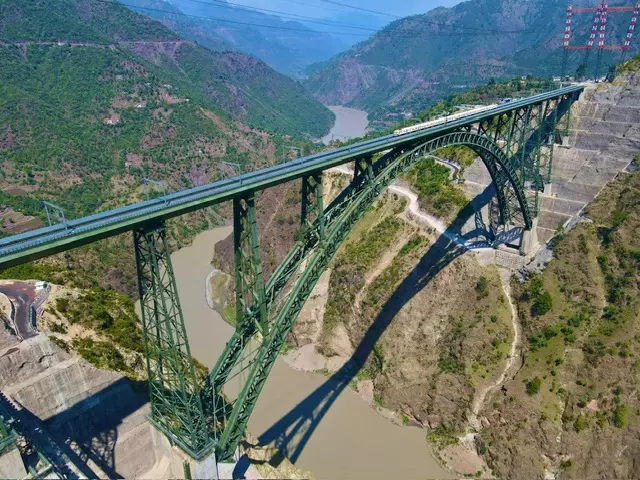Chenab Bridge: Capturing Hearts From Cloud To Valley
As the aircraft approaches the Chenab Valley, the pilot’s voice echoes through the cabin: “Below you is the world’s tallest railway arch bridge, Chenab Bridge.”: Sources

Capturing iconic buildings or enchanting places from above the clouds always delights air passengers. The new addition to this list is the recently opened Chenab Bridge, which is the world’s highest railway arch bridge.
Flight pilots are making special announcements when the aircraft flies over the landmark bridge, allowing eager passengers to peek out from their windows to capture photographs of the Chenab Bridge from the clouds.
As the aircraft approaches the Chenab Valley, the pilot’s voice echoes through the cabin: “Below you is the world’s tallest railway arch bridge, Chenab Bridge.”
The moment the announcement is made, passengers rush to their windows, activate their mobile cameras, and begin recording videos and clicking pictures of this engineering marvel.
Down below, the enthusiasm is equally contagious. Locals from nearby villages and mountainous regions are seen taking photographs and recording videos of the bridge from different vantage points. Some are live-streaming the moment, while others are sharing it instantly across Instagram and Facebook.
Part of the ambitious Udhampur-Srinagar-Baramulla Rail Link (USBRL) project, the Chenab Bridge is the highest railway arch bridge in the world. Soaring 359 metres above the riverbed, it spans the Chenab River near the Salal Dam and stretches a total length of 1,315 metres. Its main steel arch alone measures 467 metres and is built to withstand wind speeds up to 266 kilometres per hour.
It rises 35 metres higher than the Eiffel Tower and stands nearly five times taller than the Qutub Minar. A staggering 28,000 metric tonnes of steel went into crafting this monumental structure. For the first time in its history, Indian Railways deployed a cutting-edge cable crane system featuring two massive cable cars and pylons over 100 metres tall to bridge the 915-metre-wide gap.

